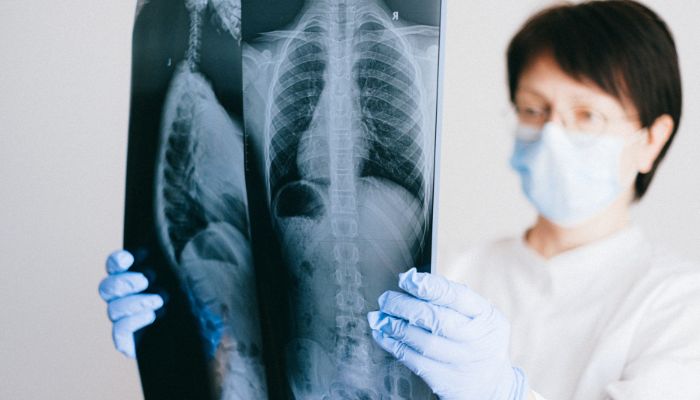|
Study targets correlations among SSc patients with different types of lung disease by Andrea Lobo, PhD The degree of skin tightening is associated with changed levels of proteins implicated in inflammation and cell death among systemic sclerosis (SSc) patients with pulmonary involvement, a study in India reports. The study established protein correlations among SSc patients with different types of lung disease, which might contribute to identifying lung involvement in people with newly diagnosed SSc, the team suggested. “A longitudinal follow up in these patients with assessment of these immunological parameters may be helpful in monitoring the disease,” the researchers wrote. The study, “A comparative study of modulatory interaction between cytokines and apoptotic proteins among Scleroderma patients with and without pulmonary involvement,” was published in the journal Cytokine. SSc is characterized by abnormal scarring of the skin and potentially internal organs, such as the heart, kidney, lungs, and digestive tract. The disease is thought to develop from the combination of immune dysfunction — meaning the activation and recruitment of immune cells and the production of self-targeting antibodies (fibrosis) — and damage to small blood vessels. The most prominent forms of lung involvement in SSc are interstitial lung disease (ILD), a group of conditions characterized by lung inflammation and fibrosis, and pulmonary arterial hypertension (PAH), caused by the narrowing of small blood vessels that transport blood to the lungs. Studies have reported the involvement of proinflammatory and pro-fibrotic signaling molecules called cytokines in SSc. Also implicated in the disease are proteins associated with apoptosis — programmed cell death (as opposed to cell death caused by injury), which can alter immune responses. To investigate the possible correlation between blood cytokines and apoptotic proteins in SSc, researchers in India analyzed 100 treatment-naïve SSc patients, with or without pulmonary involvement, as well as 100 healthy people who served as controls. Study design
The age range of the patients was 18-60 years, and the majority were women. Most patients had diffuse SSc (90%), characterized by widespread skin and possibly internal organ involvement. The remaining patients had limited SSc, where skin thickening is typically confined to areas below the arms, hands, fingers, and face. Patients were grouped as having pulmonary involvement, including ILD (26%), PAH (12%), and without pulmonary involvement (62%). The blood levels of proinflammatory cytokines were generally elevated in SSc patients compared to healthy controls, except for TGF-beta 1, whose levels were reduced significantly. Among apoptotic proteins, the levels of perforin, granzyme B, and caspase-8 were elevated significantly in SSc patients, whereas caspase-1, caspase-9 and caspase-3 were reduced appreciably in the SSc group. When looking into SSc patients with pulmonary involvement, TGF-beta 2 levels were elevated significantly in SSc-ILD patients, whereas IL-4 levels were reduced in people with SSc-PAH or without pulmonary involvement, compared to those without pulmonary changes. Blood levels of apoptotic proteins were not remarkably different between SSc patients with ILD, PAH, or without pulmonary manifestations. Regarding SSc-related symptoms, the group with pulmonary involvement showed notably elevated levels of TGF-beta2 and TNF-alpha when in the presence of Raynaud’s phenomenon, which is a condition in which the fingers and toes feel numb, prickly, and frigid in response to cold or stress, and sclerodactyly (skin thickening of the fingers or toes), and trouble swallowing, compared to the group without pulmonary involvement. Calcinosis, the skin accumulation of calcium salts, was associated with higher levels of TGF-beta2 in people with pulmonary alterations. Significant correlations Significant correlations were found between blood cytokines and apoptotic proteins in SSc patients with and without pulmonary involvement. The researchers highlighted a correlation between two TGF beta molecules and caspase-8 only in patients with pulmonary manifestations, showing “its association with pulmonary involvement in Scleroderma patients.” SSc-ILD patients reported higher modified Rodnan skin scores (mRSS, a measure of skin fibrosis) compared with those with SSc-PAH or without pulmonary manifestations. In people with SSc-ILD, finger tightening and calcinosis/lesions were significant clinical presentations, whereas digital ulcers were prominent in SSc patients without pulmonary involvement. “Our study has managed to identify significant protein-protein interactions between TGF-β group of cytokines and Caspases, which form integral part of extensive fibrosis leading to complex pulmonary manifestations,” the scientists wrote. “Identification of these correlations will help to identify lung involvement in treatment naïve SSc patients. This will also possibly help to evaluate these patients for monitoring disease prognosis after treatment by conducting sequential follow-up studies,” they added. Comments are closed.
|
AuthorScleroderma Queensland Support Group Archives
July 2024
Categories
All
|
Scleroderma Association of Queensland
©Scleroderma Association of Queensland. All rights reserved. Website by Grey and Grey.

